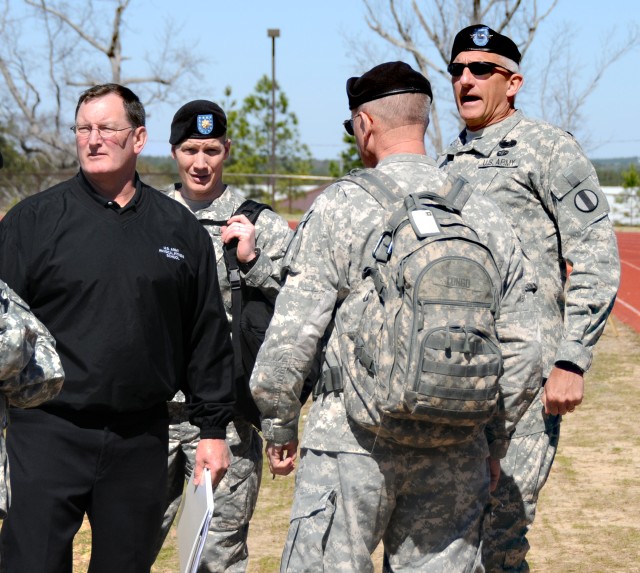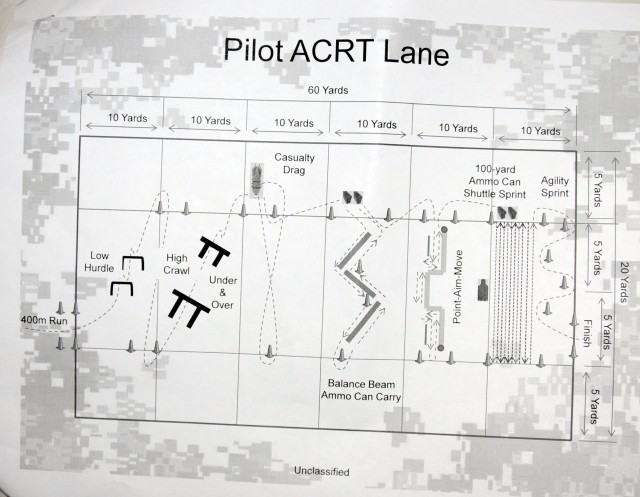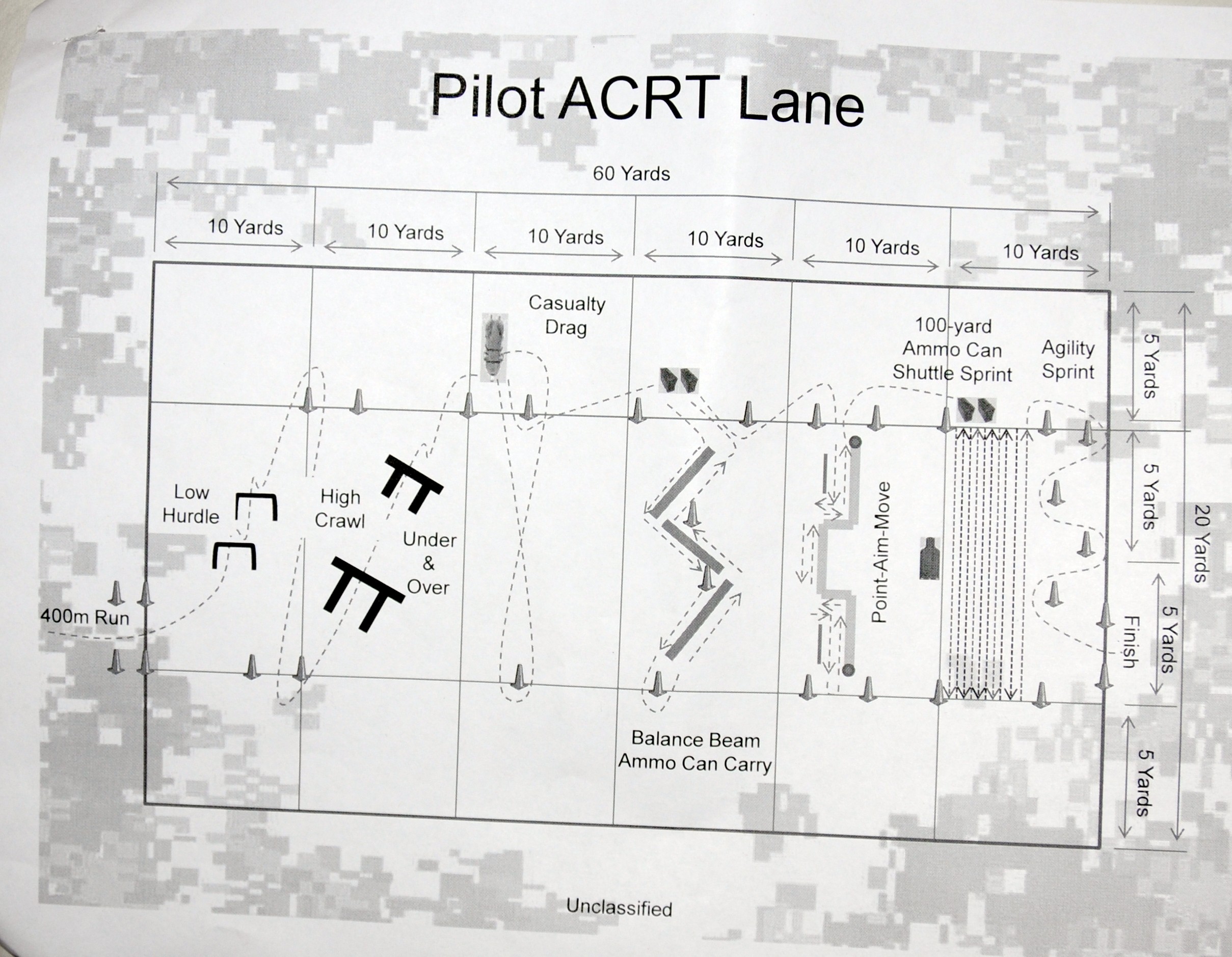FORT JACKSON, S.C. (Army News Service, March 2, 2011) -- For the first time since 1980, the Army's physical fitness test is being overhauled. It will be replaced by both the Physical Readiness Test and the Army Combat Readiness Test.
Over the next few months, the two tests will be conducted at eight installations as part of a pilot program, where standards will be also developed. The new tests could go Army-wide in October, said Lt. Gen. Mark P. Hertling, deputy commanding general of the U.S. Army Training and Doctrine Command, Initial Military Training, at Fort Monroe, Va.
"Today's PT test does not adequately measure components of strength, endurance, or mobility," Hertling said.
Hertling and Frank Palkoska, director of the Army's Physical Fitness School, began discussing the need for better physical fitness tests while together at West Point's department of physical education in the early 1980s. But it was the progression of sports science that led to development of the new Army Physical Readiness Test and Army Combat Readiness Test.
"We needed to come up with a program for the incoming young Soldiers who were not as focused on health, fitness and nutrition," Hertling said.
The two tests align with the new Army Physical Readiness Training program, outlined in Training Circular 3-22.20, that began Army-wide implementation in August.
The new training involves anaerobic exercise.
Used by athletes to promote strength, speed and power and by body builders to build muscle mass, anaerobic exercise leads to greater performance in short duration, high-intensity activities.
Aerobic exercise includes lower intensity activities performed for longer periods of time.
The Army, said Hertling, has been on an ebb and flow of physical fitness training for the last 60 to 70 years.
"Every time prior to combat, our fitness regimen and fitness testing is very different to what we do after we've experienced combat. But right after Vietnam, some of the fitness mavens, like Ken Cooper, sold the military on aerobic training. But this isn't necessarily the way we do things in combat," Hertling said.
One of the initial concerns on changing the test, Hertling said, anticipated comments such as, "Why are we changing' It's been good enough for 30 years."
"In fact, just the opposite is happening. Soldiers enjoy a challenge and many have come up to me and said, 'Thank you for fighting for these changes,'" Hertling said.
The old test required completion of three events: two minutes of push-ups, two minutes of sit-ups and a two-mile run.
The new Army Physical Readiness Test has five events:
- 60-yard shuttle run measures lower body muscular strength and anaerobic power, assessing speed, agility and coordination
- 1-minute rower (variation of a sit-up) measures total body muscular endurance and assesses total body coordination
- Standing long jump measures lower body muscular strength and assesses lower body power
- 1-minute push-up measures upper body muscular endurance and assesses trunk stability
- 1.5-mile run measures lower body muscular endurance and aerobic capacity and assesses speed stability
The new Army Combat Readiness Test has five events:
- 400-meter run assesses upper body muscular endurance and anaerobic power, coordination, speed, and stability
- Individual movement techniques assess upper and lower body muscular endurance, agility, balance, coordination, speed and stability
- Ammo can shuttle sprint assesses total body muscular strength and endurance, agility, coordination, speed, stability, and power
- Casualty drag assesses total body muscular strength and endurance, agility, coordination, speed, stability, and power
- Agility sprint assesses lower body anaerobic power, speed and power
In order to develop these tests, Hertling asked Palkoska to look both inside and outside the Army for subject-matter experts to help develop a test which is gender neutral and age specific.
Experts on the advisory board include Chip East, professor of physical education at West Point; Neal Bumgartner, program director of Air Education and Training Command at Randolph Air Force Base,Texas; and Tim Bockleman, sports medicine coordinator at the Marine Corps' Parris Island.
"Also, we couldn't develop a test that required buying equipment," Hertling said. "All you need is a track and some graders to administer the test."
Following the Army Physical Readiness Test portion, participant Danica Foster, an instructor at the Army Physical Fitness School at Fort Jackson, S.C., had only one piece of advice, "get in better shape."
After taking the Army Combat Readiness Test portion, Sgt. 1st Class Cornelius Trammell, also an instructor at the school, had one thought on his mind: "My quads are on fire," he said. "I consider myself in great shape and always do well in distance running, but this was a challenge and made me breathe hard."
"This is what anaerobic training is all about," Hertling said. "It's like a boxer in the first and second round, just like in combat with all the stress and before you can relax and take in oxygen."
The proposed pilot test sites are: Fort Leonard Wood, Mo.; Fort Benning, Ga.; Fort Sill, Okla.; Fort Jackson, S.C.; Fort Bliss, Texas; West Point, N.Y.; Fort Bragg, N.C.; and Joint Base Lewis-McChord, Wash.
Related Links:
TRADOC revises Army Physical Fitness Test
Video: Lt. Gen. Hertling on revised Army Physical Fitness Test










Social Sharing